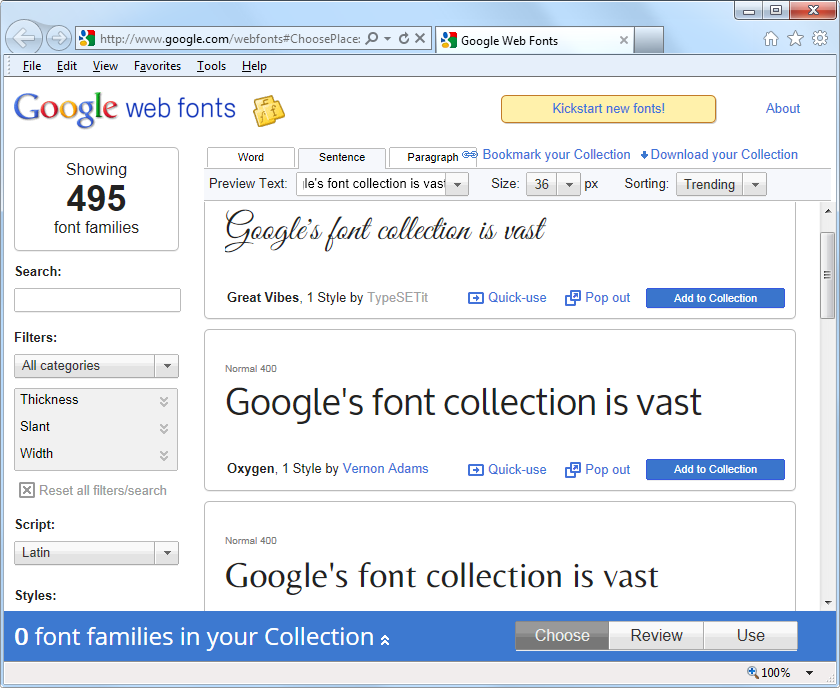Web Fonts
The use of CSS3 web fonts vastly increases the typography available
to web designers by allowing fonts to be loaded in and displayed from
across the Web, not just from the userâs computer. To achieve this,
declare a web font using the @font-face
property, like this:
@font-face
{
font-family:FontName;
src:url('FontName.otf');
}The url function requires a value
containing the path or URL of a font. On most browsers you can use either
TrueType (.ttf) or OpenType
(.otf) fonts, but Internet Explorer
restricts you to TrueType fonts that have been converted to EOT (.eot).
To tell the browser the type of font, you can use the format function, like this (for OpenType
fonts):
@font-face
{
font-family:FontName;
src:url('FontName.otf') format('opentype');
}or this (for TrueType fonts):
@font-face
{
font-family:FontName;
src:url('FontName.ttf') format('truetype');
}However, because Internet Explorer accepts only EOT fonts, it
ignores @font-face declarations that
contain the format function.
Google Web Fonts
One of the best ways to use web fonts is to load them in for free from Googleâs servers. To find out more about this, check out the Google web fonts website (at http://google.com/webfonts; see Figure 19-11), where you can get access to more than 500 font families, and counting!

To show you how easy using one of these fonts is, ...
Get Learning PHP, MySQL, JavaScript, and CSS, 2nd Edition now with the O’Reilly learning platform.
O’Reilly members experience books, live events, courses curated by job role, and more from O’Reilly and nearly 200 top publishers.

